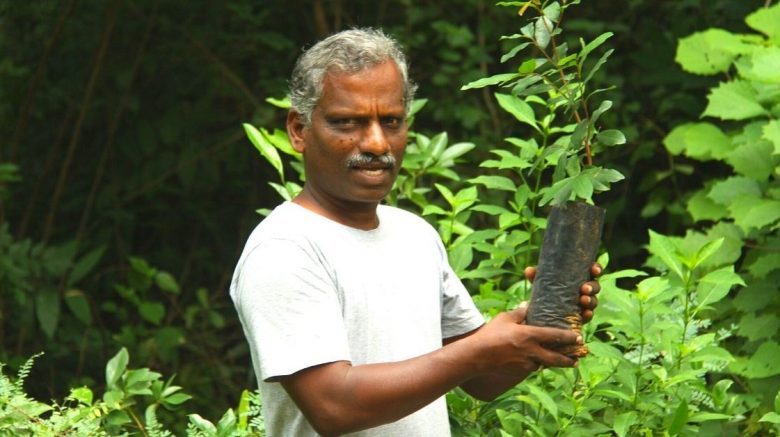D Saravanan spent three years to collect indigenous seeds from farmers and sacred grooves across Tamil Nadu and Puducherry. Here’s his exceptional journey
D Saravanan could not be a more fitting example of Mahatma Gandhi’s famous quote, ‘Be the change you wish to see in the world’.
A true environmentalist at heart, Saravanan dedicated nearly 25 years of his life to turn barren land into a green luscious forest spread over 100 acres, now known as the Aranya Forest and Sanctuary in Poothurai village, Tamil Nadu.
In 1994, Joss Brooks, an Australian who played a role in restoring Auroville’s ecology, invited Saravanan to join the Auroville Green Work Resource Centre (AGWRC) as a teaching assistant. Brooks learnt about his passion for the environment in a rally.
Impressed with his work, co-members of AGWRC, Rauf Ali and Nevi, who originally started Aranya, gave him the responsibility to look after the place and develop the ecology.
Although Saravanan was honoured with the responsibility, it was indeed a bold commitment. The land was devoid of any vegetation, and though several individuals and experts had tried planting seeds, no one recorded any success. Even the grass refused to grow.
So what gave Saravanan, a class 12 graduate, the confidence to transform such a humongous land into a forest?
“It was my family. I have grown up seeing my mother, father and uncles always fighting against development that comes at the cost of the environment. I was 14 when I participated in the 100-day march for ‘Save the Western Ghats’ rally and though I didn’t understand much, I knew infrastructural development had big repercussions. So when I got a chance to make a difference in Auroville, I grabbed it. Others’ failures didn’t deter me. Their mistakes became my learning curve,” Saravanan, now 52, tells The Better India.
Thanks to his exemplary work and dedication, the forest has over a crore tree and 900 species of indigenous plants like Diospyrus Melanoxylon, Gloriosa superba, Memecylon Umbellatum and Derris Ovalifolia. The forest is home to six man-made water bodies and pristine ravines.
Carefully choosing plant species that were rainfed and climatically adjustable and also ones that made the land fertile were important aspects that determined the green future of Aranya.
Changing the health and ecology of land was time-consuming and labour intensive. It took him and the local volunteers nearly three years to level the land.
“The water tables stood at a depth of 150 feet, which meant there was no way a plant could survive without us watering it daily. Now, this was not an option considering the water scarcity problems in the area. So, to increase the water tables we opted for rainwater harvesting systems via bunds. The bunds also helped in controlling soil erosion by diverting the water runoff to ponds and reservoirs,” explains Dr Krishnan, former Deputy Director in the state government’s irrigation department. Being a local, he was one of the first few people to join the movement as a volunteer.
They dug a 100-foot deep borewell and built six reservoirs and one check dam to capture every drop of rainwater for the initial plantation of grass and millets.

